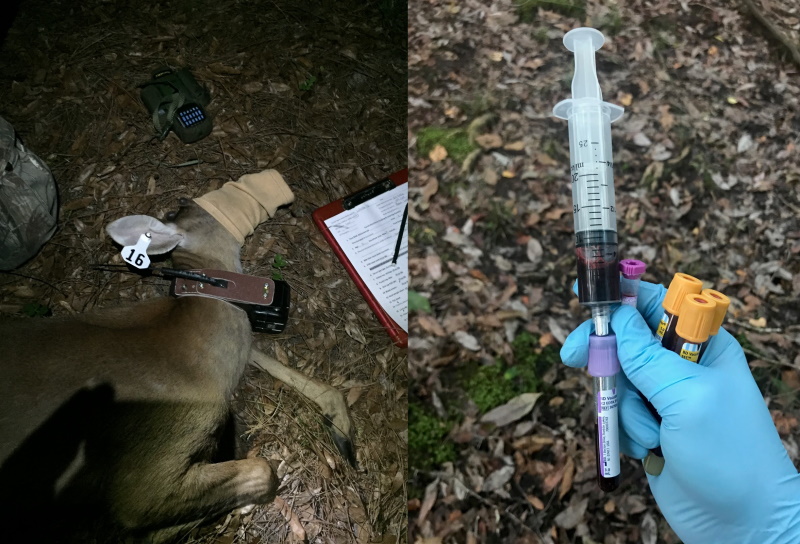
GAINESVILLE, FL – The latest #MedGeo paper from SEER Lab‘s Maria Uribasterra, Jeremy Orange, Dr. Emily Dinh, and Dr. Jason Blackburn describes the seroprevalance of epizootic hemorrhagic disease virus (EHDV) in wild white-tailed deer from North Florida. This study was part of the larger Cervidae Health Research Initiative (CHeRI), directed by Dr. Samantha Wisely from Wildlife Ecology and Conservation.
EHDV is caused by an orbivirus and transmitted by biting Culicoides, often known locally as midges or “no-see-ums”. There are three dominant serotypes or virus types circulating in Florida where EHDV is endemic. The virus can instigate acute clinical signs, which can greatly affect deer health, and in acute cases secondary infection from opportunistic bacteria can lead to respiratory disease and death.
In this study, the team was interested in overall prevalence of EHDV in wild deer sampled from hunter check stations or a large capture/collaring effort lead by SEER Lab. Blood serum samples were tested for antibodies to EHDV and whole blood samples were tested for EHDV and bluetongue virus (BTV; another orbivirus that affects livestock and wildlife) using reverse transcription polymerase chain reaction (RT-PCR). Antibody tests confirm previous exposure to virus, while RT-PCR confirms active infection. The study found that for at least 2 of 3 circulating EHDV virus types in North Florida, exposure increases with age. The study also found both viruses using RT-PCR, though EHDV was far more prevalent than BTV. Both viruses may reduce overall animal health or long-term herd health. While both circulate endemically in Florida, little is known about local prevalence rates. This is one of the first studies to intensively sample a small geographic area and look at seroprevalence by age and across year. These results add to the growing knowledge of EHDV and BTV in Florida, an important set of diseases for wild deer and the deer farming industry, which is quite large in the state.
Read the whole paper at Journal of Wildlife Diseases.